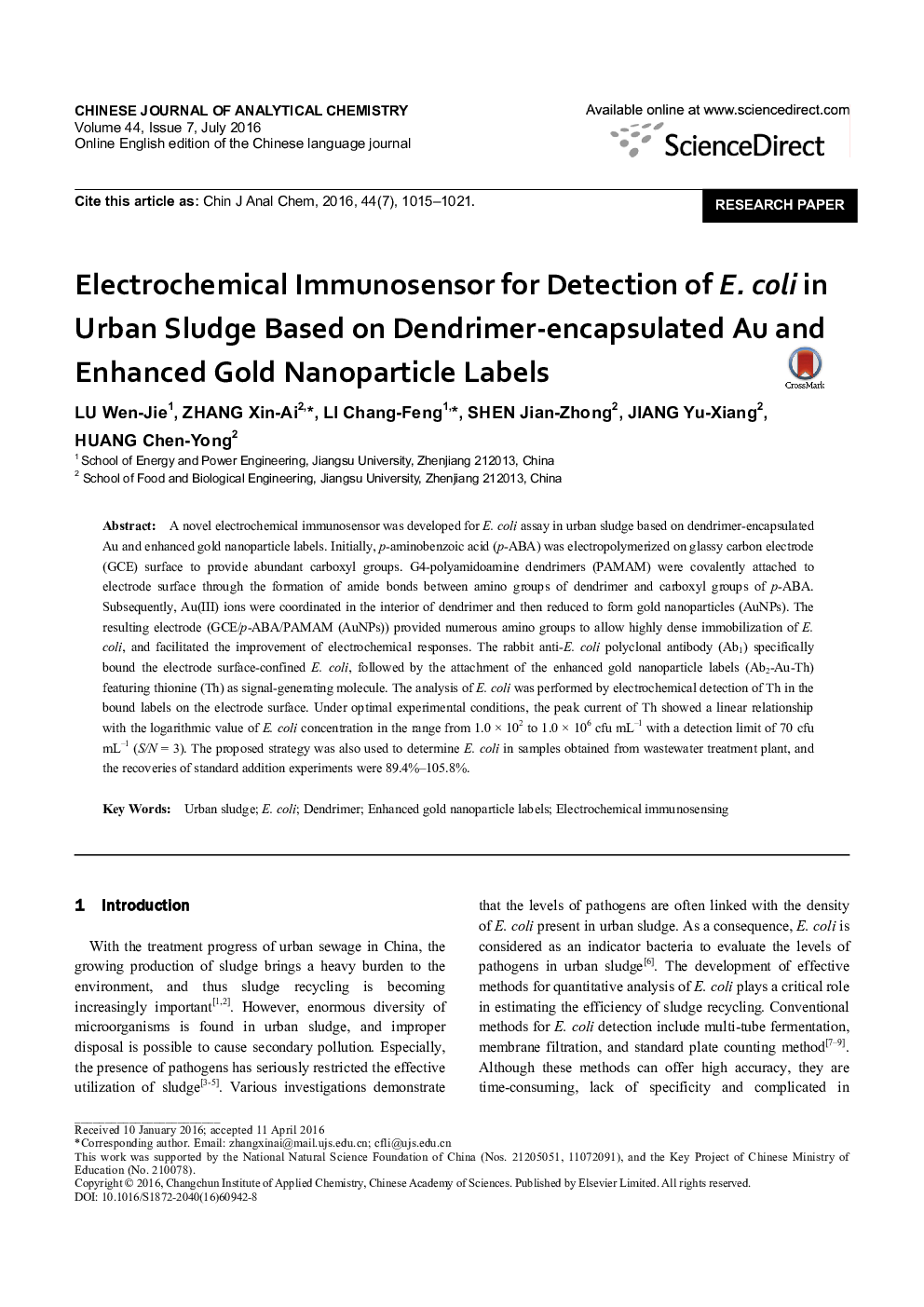| کد مقاله | کد نشریه | سال انتشار | مقاله انگلیسی | نسخه تمام متن |
|---|---|---|---|---|
| 1181842 | 1491611 | 2016 | 7 صفحه PDF | دانلود رایگان |

A novel electrochemical immunosensor was developed for E. coli assay in urban sludge based on dendrimer-encapsulated Au and enhanced gold nanoparticle labels. Initially, p-aminobenzoic acid (p-ABA) was electropolymerized on glassy carbon electrode (GCE) surface to provide abundant carboxyl groups. G4-polyamidoamine dendrimers (PAMAM) were covalently attached to electrode surface through the formation of amide bonds between amino groups of dendrimer and carboxyl groups of p-ABA. Subsequently, Au(III) ions were coordinated in the interior of dendrimer and then reduced to form gold nanoparticles (AuNPs). The resulting electrode (GCE/p-ABA/PAMAM (AuNPs)) provided numerous amino groups to allow highly dense immobilization of E. coli, and facilitated the improvement of electrochemical responses. The rabbit anti-E. coli polyclonal antibody (Ab1) specifically bound the electrode surface-confined E. coli, followed by the attachment of the enhanced gold nanoparticle labels (Ab2-Au-Th) featuring thionine (Th) as signal-generating molecule. The analysis of E. coli was performed by electrochemical detection of Th in the bound labels on the electrode surface. Under optimal experimental conditions, the peak current of Th showed a linear relationship with the logarithmic value of E. coli concentration in the range from 1.0 × 102 to 1.0 × 106 cfu mL−1 with a detection limit of 70 cfu mL−1 (S/N = 3). The proposed strategy was also used to determine E. coli in samples obtained from wastewater treatment plant, and the recoveries of standard addition experiments were 89.4%–105.8%.
The electrochemical immunosensor was developed by exploiting GCE/p-ABA/PAMAM(AuNPs) as sensing platform, which provided numerous amino groups to allow highly dense immobilization of E. coli, and facilitated the improvement of electrochemical responses. The proposed strategy could potentially be used as a promising technique for estimating the feasibility of sludge recycling.Figure optionsDownload as PowerPoint slide
Journal: Chinese Journal of Analytical Chemistry - Volume 44, Issue 7, July 2016, Pages 1015–1021